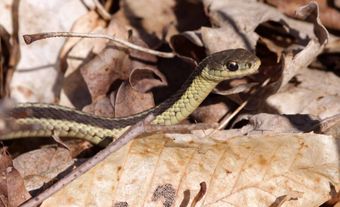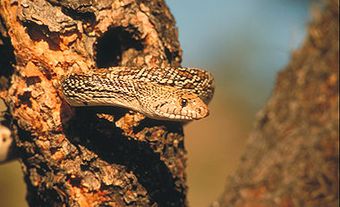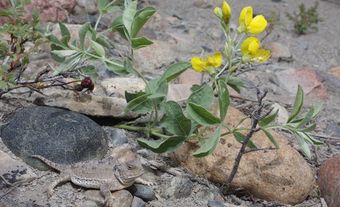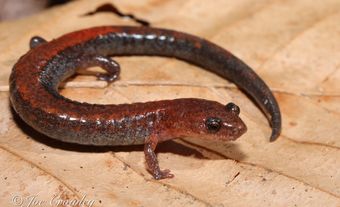
Lizard Species in Canada
|
Common Name |
Scientific Name |
Provinces/Territories |
|
Plestiodon fasciatus |
ON |
|
|
Common wall lizard |
Podarcis muralis |
BC |
|
Phrynosoma hernandesi |
SK, AB |
|
|
Northern alligator lizard |
Elgaria coerulea |
BC |
|
Northern prairie skink |
Plestiodon septentrionalis |
MB |
|
Western skink |
Plestiodon skiltonianus |
BC |
Description
All lizards have dry skin covered with epidermal scales. Most lizards have legs, a long tail, movable eyelids and well-developed ears. Lizards generally have excellent eyesight and chemoreception (i.e., smell), which they primarily rely on to find and capture prey. Some have adopted snake-like habits and may be very long and slender, with tiny or not externally visible legs. Snakes are thought to have evolved from lizard ancestors that underwent a reduction of limbs, eyes and ears while adapting to a burrowing lifestyle.
Although most lizards are small, many are capable of fast movement and will easily outdistance a human pursuer to cover. When lizards run, their body is raised clear of the ground.
Body Temperature
Like other reptiles, lizards are ectotherms. Ectotherms do not generate their own body heat; their body temperature is governed by external conditions. They can regulate their body temperature through behaviour and habitat use, for example, by moving in and out of shade. While northern lizards are generally more cold-tolerant than tropical species, winter temperatures in northern temperate regions are too cold for continued activity or survival. Lizards in Canada must therefore hibernate below the frost line.
Distribution and Habitat
Some lizard species are ground-dwelling while others are excellent climbers and spend much of their time in trees, on cliff faces and in other hard-to-reach locations. Most lizards are found in warm climates and many species are well-adapted to extreme environments, such as deserts. Their affinity for warmer weather restricts Canada’s lizard species to the southern portions of the country. In Canada, lizards are typically found in areas with open canopies where they can bask in the sun to maintain optimal body temperatures. These habitats include forest clearings and edges, fields, deserts, scrubland, rock outcrops and mountain slopes. Typically, they live in habitats that provide ample cover, such as rocks, logs and bark, which provides important protection from predators and extreme weather.
Diet and Predation
Most lizards, including all those found in Canada, are predatory. Although some larger species feed on a diversity of animals, including birds and mammals, most feed on small invertebrates, especially insects. Many species are active hunters while others are sit and wait predators, meaning they remain motionless and wait for prey to approach them.
Reproduction
Mating is usually preceded by complex courtship behaviour. Males of many species engage in combat to defend territories, which helps them secure mating opportunities with females. In most species, the female lays leathery-shelled eggs in a protected site and then abandons them, although the female remains with the eggs in some species (e.g., western skink). In other species (e.g., northern alligator and horned lizards), the females retain eggs inside their bodies until fully developed young are born.
Predators and Defence
Lizards are hunted by a wide variety of predators, including mammals, snakes, birds and invertebrates. Lizards have a variety of defensive strategies. Some species, such as the horned lizards, have excellent camouflage and will often sit perfectly still to avoid being seen. Other species, such as the skinks, are very fast and will rapidly scurry away from danger, often up a tree or into a crack or crevice where predators cannot follow. In addition, many species of lizards are capable of tail autotomy, which means they can sever and drop their tail. The tail, which is often brightly coloured (e.g., all of the skinks found in Canada), continues to wiggle and may distract the predator as the lizard makes its escape. Although the tail will grow back, dropping and regrowing a tail is energetically costly and may negatively affect future mating opportunities, growth and survival.

 Share on Facebook
Share on Facebook Share on X
Share on X Share by Email
Share by Email Share on Google Classroom
Share on Google Classroom




